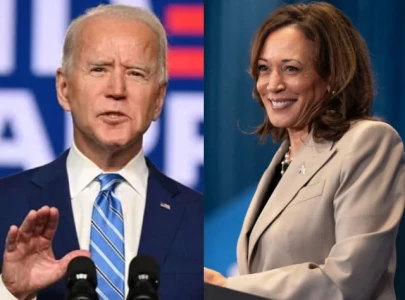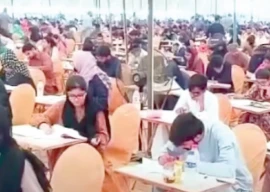
The National Accountability Bureau (NAB) sought a 14-day extension but the request was turned down by the accountability court.
NAB was given 11-day physical remand of Zardari on June 11, a day after the former president was arrested in the fake accounts case.
Zardari was arrested by NAB earlier this month after the Islamabad High Court (IHC) recalled the pre-arrest bail granted to him and his sister Faryal Talpur in the fake accounts case.
The co-chairman of the PPP was taken into NAB custody from his residence in the federal capital and was taken to the NAB Rawalpindi office.
Production orders for Asif Zardari, Saad Rafique issued
There was then much controversy over the production orders for Zardari, who is a Member of National Assembly (MNA) from NA-213, Shaheed Benazirabad-I.
For over a week, NA Speaker Asad Qaiser resisted demands of the PPP and other opposition members to issue the former president's production orders.
He finally gave in late night on June 19 and issued production orders for Zardari and Pakistan Muslim League-Nawaz (PML-N) leader Khawaja Saad Rafique.
In his first appearance in the assembly on Thursday, Zardari said the government and opposition should sit together to devise an economic policy to move Pakistan forward, which should also be made compulsory for all future governments.
The fake accounts saga
Information regarding the fake accounts came to the fore when an intelligence agency picked up a prominent money changer in an unrelated case. In December 2015, the Federal Investigation Agency (FIA) began a discreet investigation into certain bank accounts through which multi-billion rupee transactions have been made.
The probe was initially shelved but resumed almost a year and a half later with FIA’s State Bank circle initiating a formal inquiry in January 2018. By June, the FIA had several high-profile names on its list but was unable to make headway–for several reasons.
It was at his point that the Supreme Court intervened and then chief justice Mian Saqib Nisar took suo motu notice of the ‘slow progress’ in the money-laundering case.
In July, Zardari’s close aide Hussain Lawai and three others were arrested. Subsequently, the first case was registered in the mega-corruption scandal.
The then chief justice ordered the formation of a joint investigation team to quicken the pace of the investigation. The JIT identified 11,500 bank accounts and 924 account holders at the start of their investigation.
The JIT report in a nutshell
According to the report, the JIT identified 11,500 bank accounts and 924 account holders at the start of their investigation.
Its experts generated 59 Suspected Transaction Reports (STR) and 24,500 Cash Transaction Reports. That means the transactions were flagged as suspicious. Due to the high quantum of transactions, the JIT decided on a threshold of Rs10million “to track, follow and minutely investigate the flow of funds beyond the immediate counterparties and determine the source of funds and ultimate beneficiaries.”
It questioned 767 individuals, including Zardari and Talpur, while Bilawal submitted written responses.


1730948380-0/Kamala-(1)1730948380-0-165x106.webp)














COMMENTS
Comments are moderated and generally will be posted if they are on-topic and not abusive.
For more information, please see our Comments FAQ